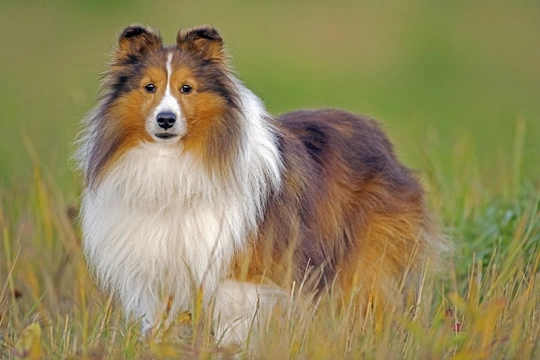
Epiphora in Dogs
Epiphora is a condition that affects a dog’s tear production with some breeds being more susceptible to developing the condition than others thanks to the shape of their eyes. However, some dogs develop the condition because they are suffering from other eye disorders which includes distichiasis or entropion. With this said, a dog can develop Epiphora because of a trauma received to the eye too, but whatever the cause it’s important for dogs to be seen by a vet sooner rather than later so a correct diagnose can be made.
Breeds Most at Risk
As previously mentioned, there are certain breeds more at risk of developing epiphora than others which includes the following:
- Shetland Sheepdog - more especially when young
- Shih Tzu
- Lhasa Apso
- Cocker Spaniel
- Pekingese
- Bulldog
- Dachshund
- Miniature Poodle
It’s worth noting that the above breeds are more predisposed to suffering from distichia. Breeds that are more at risk of suffering from entropion include the following and as such, they too are more at risk of suffering from Epiphora:
- Chinese Shar Pei
- Pug
- Mastiffs
- Poodles
- Chow Chow
- Labrador Retriever
Signs to Watch Out For
The most obvious sign of a dog suffering from Epiphora is when they have excessive tearing from one or both eyes which results in staining below their eyes. Other symptoms of there being a problem include the following:
- Squinting
- Inflammation
- Redness and irritation
- Excessive discharge from one or both eyes
- Corneal ulcers
- Skin around a dog's eyes becomes loose or saggy
In Brachycephalic breeds, the causes are congenital abnormalities and this includes when the opening in a dog's eyelids is larger than usual which exposes the eye to more sunlight. However, when a dog suffers from a condition called Ectropion which is where their eyelids turn outwards, this too can cause them to suffer from Epiphora as well. The breeds most predisposed to Ectropion include the following:
- Great Danes
- Bloodhounds
- Spaniels
It's worth noting that in some dogs, Entropion can develop because some sort of trauma to the eye or it could be put down to a dog suffering from facial nerve paralysis.
The Causes
A dog may develop Epiphora for several reasons apart from the fact they have inherited some sort of congenital eye disorder. This includes if they have suffered from the following conditions:
- Sinusitis/rhinitis
- Trauma to bones found in a dog's face
- Fractures to bones found in a dog's face
- Tumours of a dog's third eyelid and other areas of the face
- A blockage to a dog's tear ducts which could be due to inflammation
- A blockage to a dog's nasolacrimal drainage system
- Extra openings in a dog's tear drainage system found in abnormal places which is typically below the corner of a dog's eye
- A lack of openings from a dog's tear drainage system to their nose
With this said, there are several acquired conditions that can result in a dog suffering from Epiphora which includes the following:
- A foreign body has entered the eye
- Inflammation to a dog's eyelids and conjunctiva caused by some sort of infectious or immune-mediated disorder
- Ulcers or scratched on the cornea
- An inflamed iris
- Glaucoma
- Tumours on eyelids - more especially in older dogs
Diagnosing the Problem
A vet would need to have a dog's full medical history and they would need to thoroughly examine an affected eye. They may recommend taking X-rays to establish whether any lesions have formed in a dog's nose or sinuses. They may even want to carry out an MRI or CT scan, although sometimes the only way of establishing a definitive diagnosis is for a vet to perform an exploratory surgical procedure. Should it be found the cause is due to a foreign body, then flushing a dog's tear ducts can often dislodge the object and solve the problem. When it's found that irritation is the problem, vets can use a fluorecein stain which would show up any abrasions on a dog's eye.
Treating the Condition
The first thing a vet would want to do is make a dog as comfortable as possible before establishing the best treatment to manage their condition. The treatment would depend on just what was causing the problem and whether it is a congenital problem or an acquired one.
Living with a Dog Suffering from Epiphora
Dogs diagnosed as suffering from the condition would need to be seen by the vet every seven days or so. This would allow the vet to reevaluate their condition and to check whether the treatment is working or if the condition could be down to something else which might mean further tests would be necessary.
Should a dog's condition have been corrected surgically, again the vet would need to examine them every week to make sure the procedure was successful. Unfortunately, even when a dog has been treated, all too often the condition reoccurs which in short means treatment would be ongoing depending on the root cause.



